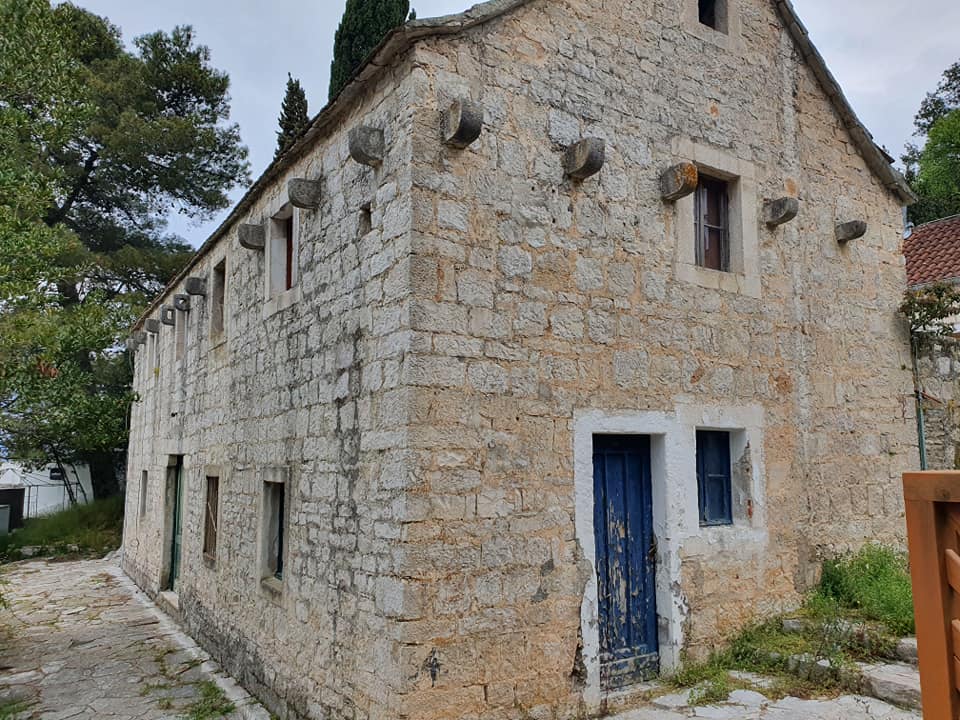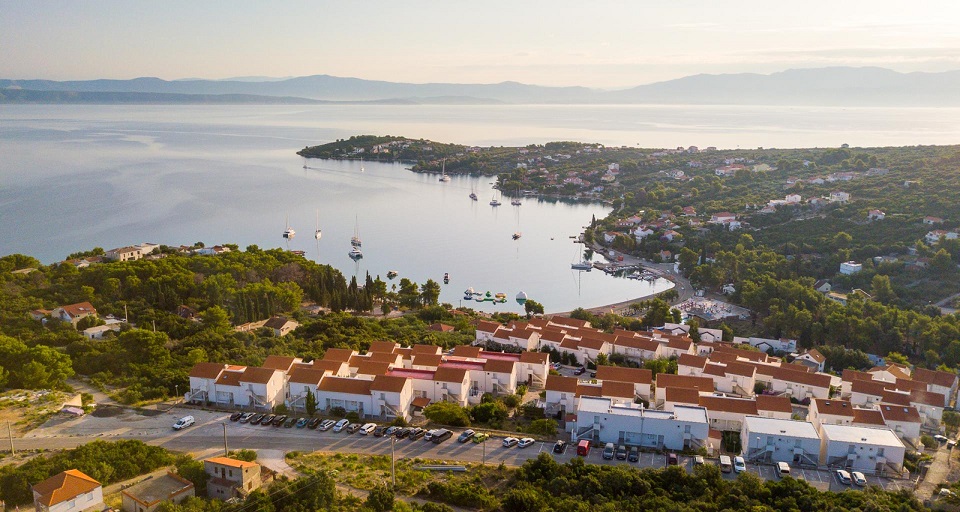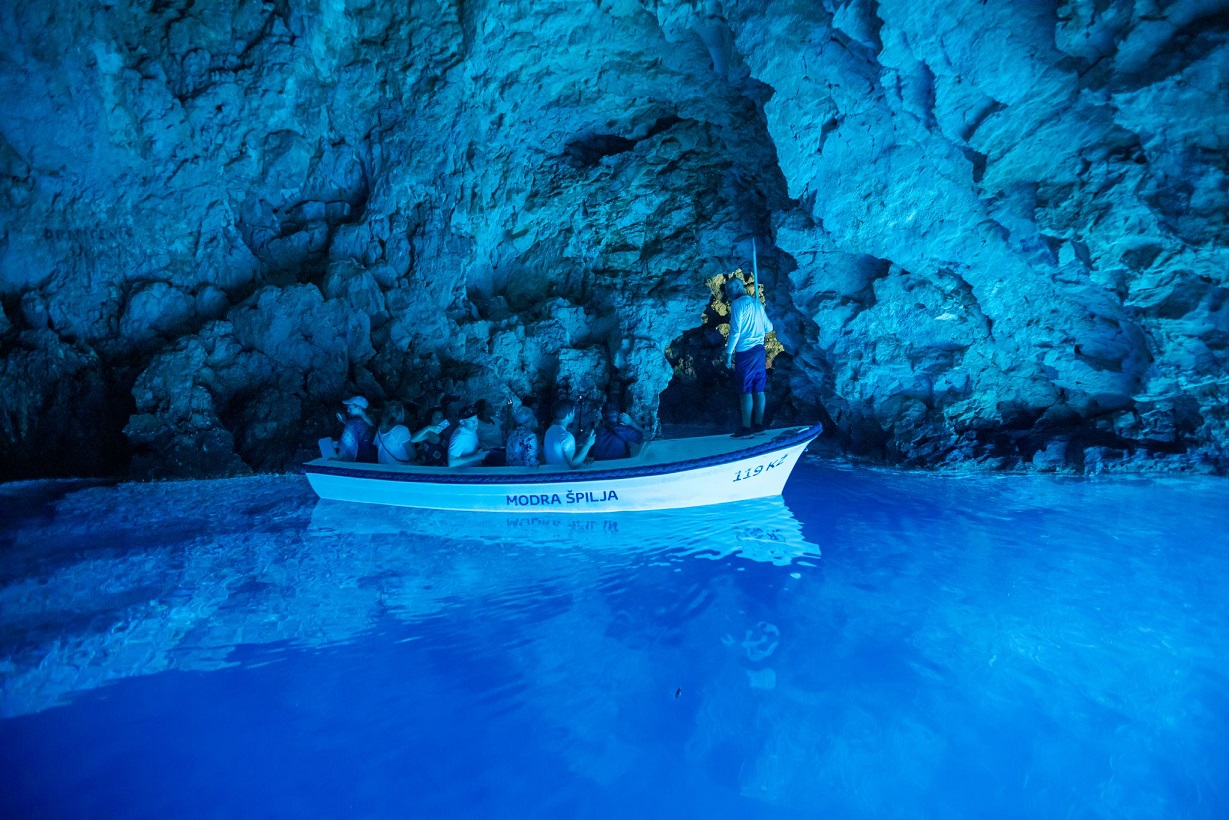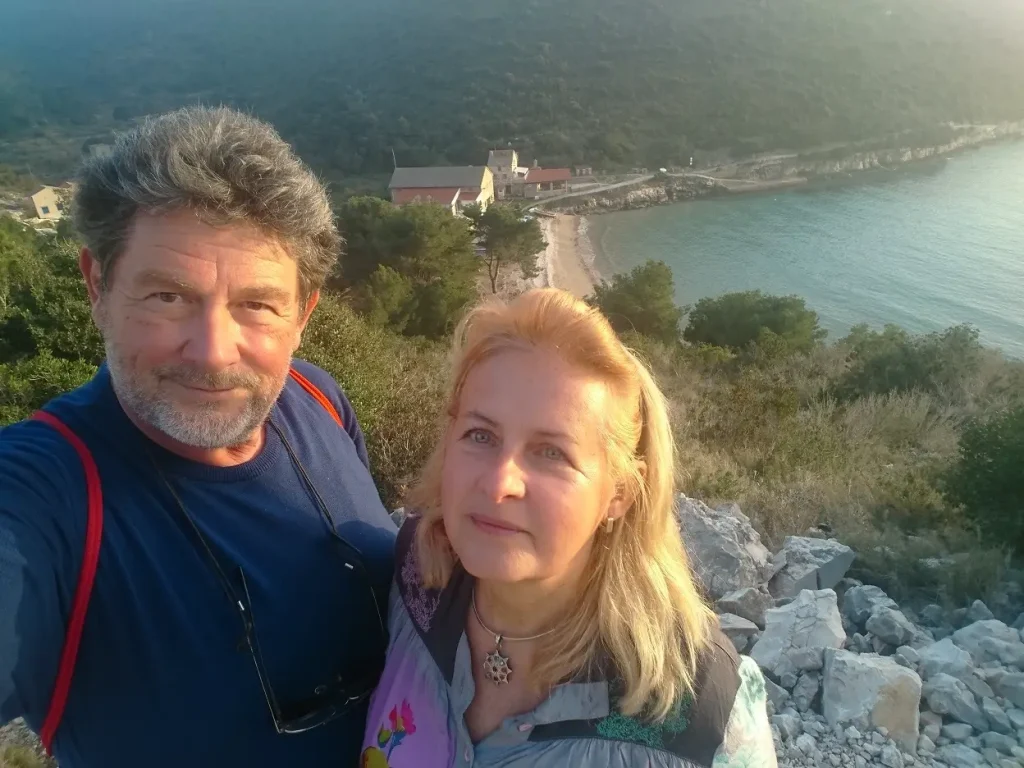You believe that the Adriatic Sea and its coast had healing properties for you because you managed to solve some health problems you had by coming to the Adriatic. Other people have confirmed the same. What thrilled you the most in Dalmatia?
I first came to Dalmatia, more precisely to the island of Hvar, during a tour organised by the ORBIS travel agency back in 1980 – back in the times of the former Yugoslavia. I remember walking along the shore from the Sirena hotel towards Hvar Town. I saw the sunset illuminating the white stone houses, surrounded by palm trees and the calm, sparkling surface of the sea. I felt a rush of emotions coming over me, and, for the first time in my life, I started crying with delight.
From that moment on, I started travelling around Croatia very often, and it was Dalmatia, and especially the islands, that delighted me the most. I want to add that I have visited many countries across the world: the USA, Canada, Russia, Ukraine, Tunisia, Sweden, Denmark, Switzerland, France, Austria, Italy, Romania, Bulgaria, and Greece, but Dalmatia is my place on Earth, and here I feel the best. I consider the Adriatic Sea to be the most beautiful in the world, not only for its aesthetic beauty but also thanks to the health benefits it provides.
Mezuporat on Biševo
I have felt on my own skin many times that swimming in the Adriatic Sea is an irreplaceable therapy that strengthens my health and immunity. Thalassotherapy – sea therapy, hundreds of bioelements and minerals dissolved in the sea, the sun – a source of natural vitamin D3, clean air, the Mediterranean vegetation – all of these are indispensable factors necessary for our health.
Surprisingly, I ‘ve noticed that the locals often don’t take advantage of these benefits of nature and what they have at their daily disposal! They rarely swim in the sea. They consider it an activity meant for tourists who rent apartments and are essential for their household budgets.
Up to this day, I’m still delighted with the Dalmatian climate, the combination of flora and fauna, the sea, and the mountains. I’m captivated by the colurs and the clarity of the Adriatic Sea, all the indescribable scents, an aromatherapeutic cocktail of rosemary, lavender, Mediterranean pine, salt, and algae. All this is intertwined, giving a person what they need, but if only they want to take advantage of its benefits.
Gatula on Biševo
You’re interested in spas and wellness, as well as in nature and plants. What do you consider to be the greatest natural treasure in the Adriatic Sea? What do you think, what do we have, and what else is needed for so-called wellness tourism?
In Poland, I’d been actively promoting a healthy lifestyle for over 25 years. I hold a Master’s degree in public health and diplomas in the fields of cosmetology and health promotion. I had my own publishing house, which had been publishing the “Gabi. Net – Estetyka & Zdrowie” magazine for over ten years. I’ve organised over 180 congresses, training sessions and workshops on a healthy lifestyle, spas, and wellness. I was a consultant in this field for many hotels and wellness centres.
Here in Dalmatia, there’s a massive potential in the area: there are hundreds of plants, herbs, natural substances, and ingredients that can be used in pro-health and anti-stress therapies in the SPA and Wellness industry: for massages, peelings, inhalation, baths. For seniors who have problems with their sleep, walking, or bad joints, business people who are often too stressed out, people who are obese and those recovering from various illnesses.
Mezuporat Bay on Biševo
Now, during the coronavirus pandemic that is doing damage to our respiratory system, we must pay attention to the body’s oxygenation, proper, deep breathing, as well as room ventilation. Gymnastics, outdoor yoga, swimming, and the intentional use of the sun are very important in supporting our immune system.
Therefore, I see the greatest potential in so-called eco tourism – being among nature, with an active form of rest, immersed within nature and all of the gifts it provides.
Porat Bay on Biševo
You’re also interested in culture and you think that there is excellent cultural potential in Dalmatia. What do you think, how would it be possible to develop it?
During my last six years in Warsaw, I worked as a culture inspector in the Mokotów district. I organised concerts, exhibitions, and other cultural events. I was also the president of the Polish-Croatian JADRAN Association. Among other things, we were focused on cultural contact between our countries. As such, we organised Croatian Culture Festivals in Warsaw, where we hosted musicians such as Parni Valjak, Goran Karan, Ana Rucner, and ‘klapa’ groups from the islands of Šolta and Brač. These events were exciting, promoting both Croatia’s culture, art, and cuisine.
Dalmatia has excellent cultural potential. Its unique, ubiquitous music and ancient architectural heritage are the elements that, in my opinion, create its strongest points. International music meetings and making music together would be an exciting idea.
For example, during one of the Croatian Festivals, two female music groups joined together: the Polish band Służewianki and the Croatian ‘klapa’ group Čuvite from the island of Šolta. These ladies sang the song “Mariana,” together, which is well known both in Poland and in Croatia. It’s similar in the realm of poetry. I think organising international poetry meetings would make for a great experience.
For example, on the island of Šolta, in Nečujam, where Krzysztof Kamil Baczyński, one of the greatest Polish poets, stayed twice during the summers of 1937 and 1938, it turned out he stayed in the very same house in which the great father of Croatian literature, Marko Marulić, wrote the poem “Judita.” This beautiful stone house is still standing there, begging for renovation. On its facade hangs a plaque dedicated to Marulić, and in front of the house, there is a plaque made of white marble in honour of Krzysztof Kamil Baczyński.

The Marko Marulić residence in Nečujam on Šolta, pictured on April 26, 2021 by Damir Jerčić, taken from the Naš Nečujam Facebook group
In the nearby church of St. Teresa, in Rogač, there is also an impressive plaque in honour of Marshal Józef Piłsudski, who in the 1930s was a model and great authority in many countries. Piłsudski also visited the Dalmatian coast, and also went to Opatija.
It would be great to establish memorial rooms for both of those great poets in this extraordinary house in Nečujam on Šolta and to organise regular poetry meetings. Another reason for that is that the great Croatian poet, Vesna Parun, also used to stay and now rests on the island of Šolta.

Nečujam on Šolta / Šolta Tourist Board
As you said, your greatest wish is to open a museum of “everything that was thrown out by the Adriatic Sea” in Biševo. What would be the theme of the museum? When can we expect this project to be realised? Are you already taking any steps?
My first artistic venture on the island of Biševo, where I’ve been staying since January this year, was painting stone Easter eggs, called ‘pisanki’ in Poland. I decorated a dozen of them and gave them to the island’s inhabitants, along with my warmest Easter greetings. That was a way for me to meet and introduce myself to them.
Around a dozen people are living here permanently. In summer, more people come from the neighbouring island of Vis, not to mention the thousands of tourists who visit Biševo mainly to see the exceptional Blue Cave.

Blue Cave on Biševo / Romulić and Stojčić
As part of the ‘Kamen i Krš’ project, a former school is being expanded and rebuilt as a tourist facility with a restaurant and cultural attractions meant for visitors of the Blue Cave. There are more tourist attractions in preparation – the “Bear Cave” and also a system of underground tunnels from World War II, which may serve as a space for the organisation of, for example, natural or historical exhibitions.
Tunnels from World War II on Biševo
Before Easter, in the tiny, unusual, ascetic church of St. Sylvester from the 11th century, I made the installation of Christ’s tomb from stones and linen that I found on the beach. Also, a crown of thorns was made of the roots and plants brought by the sea. Locals joined me in these activities, and we shared a beautiful holiday, both in the spiritual and “bodily” sphere, preparing Easter treats from both Croatian and Polish cuisine together.
Church of St. Sylvester from the 11th century
I love to paint, draw, create compositions from stones, plants, grass, and plant fibers. I often go to the nearby beach and collect what the sea brings me: pieces of glass, pieces of wood “polished” with the sea salt, interestingly shaped stones, shells, and cones. I then create various compositions from them; I just need to get the suitable glue and other necessary materials.
An installation that Beata made of stone for Easter in the church of St. Sylvester on Biševo
I dream of creating the Biševo Museum in the future, where old objects and photos of life on the island and its inhabitants would be displayed, as well as artistic compositions made of materials that were thrown out by the sea. However, we’ll need a suitable space for that, which is the hardest thing to find.
Describe your island life on Biševo without the water and the crowds, unlike your life in a big city like Warsaw?
In Warsaw, I lived very intensely and actively for more than 12 years. I had my own company, a husband, two sons, social activities, and that used to occupy almost all of my time, not leaving much free time just for myself. There has always been a longing for nature inside me, a desire to immerse myself in nature and live surrounded by it, away from all the hustle and bustle, all the rush and polluted air.
From that came my love of travelling and this long-dormant dream of living in Dalmatia. Now this dream is coming true because my sons are grown up, and after my husband’s death, I found a partner who comes from the tiny island of Biševo.
I’m living a simple life here, being at one with nature and the magnificent Mediterranean landscape that changes every day. In the morning, I open the window, listen to the cries of the seagulls and watch the shimmering colours: from azure – blue – to dark navy blue – the most beautiful sea in the world – the Adriatic Sea; huge palm trees and aloe trees, and carpets of colorful flowers.
Then we catch fish, grow herbs and flowers, we make jam from oranges, mandarins, aloe flowers, dry citrus peels, and herbs from which we also make teas, liqueurs, and tinctures, and we pickle fennel and capers. My partner Mladen is a great cook, so the daily kitchen activities are not too tiring.
Beata and her partner Mladen fishing on Biševo
We’re currently renovating the house and widening our garden, so there’s a lot to do. The lack of running water on the island means that it is necessary to conserve it and use almost every drop we collect. The so-called ‘guštirnie,’ water tanks collecting the rainwater are an obvious necessity here, so each house has at least one of them.
In crises, when drought robs the island of rain, a ship that supplies water comes here so that we can buy it. Gardening is currently one of the biggest challenges for me. We have planted some vegetables, fruits, herbs, and flowers, and, despite the water restrictions and strong winds that often blow on the island, we hope we will able to harvest all we have planted.
Porat Bay on Biševo island
You’ve gathered together 68,000 Poles in love with Croatia in one Facebook group. What’s the name of the group? When did you start it, and for what purpose?
My private Facebook group called ‘Chorwacja,’ which I founded almost nine years ago, already has around 68,000 members, which confirms how very popular Croatia is among Poles, one of the top nationalities most frequently visiting Croatia. It has been said that last year the whole tourist season was saved thanks to the Polish tourists arriving in great numbers, despite the pandemic.
However, I noticed that even though so many tourists come from Poland to Croatia, there’s still a lack of information available in Polish – in restaurants, cultural facilities, and guides. This gap should be filled as soon as possible. I founded the Facebook group to allow people to exchange experiences related to this country, discover exciting places, and promote Croatia’s culture, history, and customs.
To read more about lifestyle in Croatia, follow TCN’s dedicated page.








